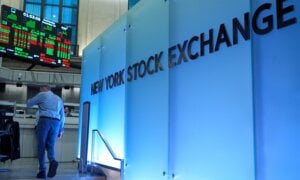
Photo by Lukas Souza on Unsplash
Each week, Cut the Crap Investing founder Dale Roberts shares financial headlines and offers context for Canadian investors.
Everything you need to know about the CAPE ratio
We’ve talked a lot about valuations in this space. Valuation mostly refers to the current earnings (profits) you are receiving when you buy a stock. Remember that when you buy a stock you are becoming a part-owner of that business. And as a business partner, you own a portion of the profits and any dividends, along with the debt and other liabilities.
We mostly want to own profitable companies. If you give a company $100 and they earn $10 for you on the $100, that’s a very profitable investment. It might be better than buying into a company that earns 50 cents for you on your $100 investment. Yes, it might take a while to earn or get your money back, and the pace of growth of the company is also a great consideration. A company might not have considerable current earnings, but if they are growing revenues at a rapid pace, there is the strong prospect of generous future earnings.
In mid-February, we looked at Shopify’s earnings and growth. While the Canadian tech darling was new to the game of actually turning a profit, its growth was, and remains, incredible. Investors were rewarded for the growth thanks to higher and higher stock prices.
In simple terms, investing in stocks might come down to current earnings and future prospects.
With respect to valuations, you may have heard of the CAPE ratio. CAPE stands for cyclically adjusted price-to-earnings (ratio). Cyclically adjusted means that the valuation method will smooth out the rough edges of any data over time. It is said to offer a more true reading of valuations and the prospects for future stock returns. It can’t predict the timing of stock market corrections, but it does offer a very good reading on returns prospects over time.
This link from Meb Faber, the chief investment officer at Cambria Investment Management, shows that a very high CAPE (lower earnings) ratio mostly delivers very low returns over a 10-year period. A low CAPE ratio (higher earnings) mostly delivers very generous earnings over a 10-year period. But it’s not an exact science. There are outliers. But, mostly, earnings matter over time.
In fact, earnings offer 80% of the explanatory power for stock performance, according to this tweet from Scott Barlow of the Globe and Mail, referencing a Bank of America study. (Look for item No. 2 on that list.)
So, yes, investors might want to curb their enthusiasm with respect to U.S. stocks.
Another link from Faber reminds us that if an investor wants to avoid expensive stock markets, they can turn to cheap stock markets. There are some great charts in that link.
Another link shows paying attention to valuation can work for individual stocks or sectors. Evidence of that came by way of the fact Canadian banks are the cheapest they have been in 20 years. I offered that on my site last August. The Canadian banking group has essentially doubled up on market returns from that point.
As always, past performance does not guarantee future returns. That goes for stocks and valuation models. But, over time, valuation usually matters—a lot. So the CAPE ratio is a great model to understand and perhaps put to use at times.
The “Beat the TSX” stock portfolio
Speaking of value and Canadian stocks, I’d like to share the Beat the TSX portfolio with MoneySense readers.
It’s a simple stock portfolio-building model that has a very good history of beating the Canadian stock market. The BTSX portfolio (that’s a hypothetical ticker—there is no ETF) invests in the top-10 highest-yielding stocks in the TSX 60. By using the TSX 60 as the underlying index, it has more of a blue-chip slant. And the highest-yielding stocks are usually stocks that are quite beat-up or slightly out of favour. As the stock prices go down, the current dividend yield goes up.
Given that these are the bluest of the blue chips, there’s a good chance their earnings are holding up or even still growing—and that means the BTSX investor is buying more current earnings.
Investors are buying value and the juicy dividend yields that are available for reinvestment. It’s simply beautiful.
My first mention of Beat the TSX Portfolio in this space was in an item on the Canadian investor who built an $8-million portfolio.
Growing the portfolio via juicy dividends can certainly lead to good investor behaviour. Just be careful, as those big and growing dividends can be addictive. So, if you do embrace BTSX, be sure to keep global diversification and sensible asset allocation in mind. I hold five of those BTSXers in my concentrated Canadian stock portfolio, but I’m also investing in U.S. and international stocks and funds, plus bonds, commodities and bitcoin.
I had a look at the BTSX portfolio for 2021. As always, past performance does not guarantee future returns.
The beginning of the end of traditional advice?
Millennials and other younger investors are showing that they get the importance of low-fee investing. Over time, could this spell “the end” for the traditional advisors?
Advisor.ca looked at why younger Canadians are choosing to save on investment fees. There is a whole new generation or three of self-directed investors in the making. And if they do it themselves, they may not need a full-time advisor.
From that post and a perspective offered by self-directed investor Sheldon Petrie…
“‘We aren’t bound to the same thinking and ideas that our parents had,’ Petrie added. ‘For them, access to ETFs and low-cost investing was non-existent to most Canadians. None of my parents knew anything about investing other than GICs and mutual funds’.”
Game-changing products are available—just take a look at the Best ETFs in Canada for 2021. That list includes the all in one asset allocation ETFs that allow an investor to hold a well-diversified global portfolio with fees in the range of 0.20% to 0.25%.
Many Canadians are also turning to robo-advisors that offer ETF portfolios and various levels of advice or planning, at fees in the range of half to two-thirds savings of the traditional advisory route.
That’s what I’d call a no-brainer compared to the Canadian mutual funds that come attached to some of the highest (wealth-destroying) fees in the world.
And yet Canadians are creatures of habit. Most Baby Boomers who were brought up on mutual funds are sticking with their high-fee investments. Mutual fund assets still dwarf ETF assets held by Canadians, though ETF sales have outpaced that of mutual funds over the last few years.
From that same advisor.ca post…
“According to a recent report from global comparison site Finder.com, nearly one in three Canadian millennials (33.7%) say they plan to quit working with their financial advisors or are seriously considering it. Generation Z follows close behind, with 31% thinking of moving on from their advisors in favour of DIY investing.
“In contrast, only 21% of generation X and 11% of baby boomers say that they’re ready to let go of their advisors, or at least considering it.”
The above stats point to investors leaving their current advisor. But many new investors won’t even consider contacting an advisor in the first place.
These are some worrisome trends for the traditional advisory community; advisors will have to pivot. The future is likely a hybrid future with investors managing their own simple and cheap but well-diversified portfolios. They’ll get their advice on the cheap as well. On that front, there is a growing trend towards fee-for-service planners that offer conflict free planning, as the advisors are not compensated by any of the investments they recommend.
More hybrid options and advice-light options are in the works. And I’d suggest most Canadians don’t need higher levels of complicated planning that requires paying a full-service advisor on a full-time basis. Most Canadians are simply struggling to fill their RRSP and TFSA accounts.
And technology-based advice and planning will also evolve and play a greater role. This from Preet Banerjee, founder of MoneyGaps:
“The so-called ‘HENRYs’—High Earner, Not Rich Yet—are helping drive the growth of fee-for-service planning layered on top of DIY or robo-advisor investing. But this group is relatively small compared to the majority of consumers who are underserved when it comes to planning. The next paradigm shift will be light planning, whether it be technology-assisted human advisors and coaches, or self-serve planning options that cater to the massive middle.”
That’s not to suggest many Canadians with considerable assets and complicated scenarios don’t benefit from a family shop or other full service offering. They do. But it is not the need of the typical investor or family.
We perhaps should not pay for advice that we do not need or use.
Many younger investors are “wising up” on that front.
I’d have to admit that I’ve mostly given up on the “old folks.” But those of us who preach the benefits of low-fee investing keep trying; we continue to see a trickle of converts who discover a better way to invest.
Canadian flight bookings are among the lowest in the world
Canadians don’t have vaccine hesitancy, but they might have “close-quarters hesitancy.”
From Yahoo! Finance…
“That’s according to a report from the Mastercard Economics Institute, which tracks anonymized sales activity from around the world. The report found that 20% of the 32 countries included in the survey have seen domestic flight bookings return to at least 90% of pre-pandemic levels. Canada, meanwhile, has had some of the lowest travel levels in terms of domestic, international and business travel.”
That might turn out to offer some pandemic irony (if we’re allowed to have any) as Canadians have embraced vaccines like no other developed nation. The most vaccinated might end up being the least well-travelled.
While we are certainly early in the economic grand reopening process in Canada, this trend might not be surprising. Canadians are known to be a cautious bunch through the pandemic and perhaps new pandemic habits will be hard to break.
It’s quite possible we are saying to the rest of the world, uh, you go first, and have a nice flight. Or maybe have a nice cruise as you shoulder up to the masses at the all-you-can-eat buffet with a few thousand (mostly but not entirely vaccinated guest list) folks who are hungry for travel and crab cakes.
Will Canadian cautiousness spill over to any other types of activity, such as dining out, heading to the movies, travelling within Canada, heading back to the office or riding that killer Behemoth roller coaster at Canada’s Wonderland?
If there is close-quarters hesitancy, that could affect the pace and breadth of the economic recovery. That may put a cap on the recovery for certain sectors such as restaurants, travel and other entertainment, and the Canadian REIT sector. If there is hesitancy, we might not be so quick to head to the mall for those new Nikes or Lululemon gear that we need.
My wife and I had friends over last night. We’re all double-vaxxed. We were outside. Instead of shaking hands or hugging we did that sanitary pandemic elbow-tap thing.
Old habits in the new normal.
Dale Roberts is a proponent of low-fee investing who blogs at cutthecrapinvesting.com. Find him on Twitter @67Dodge.
Dale Roberts is a former investment advisor and proponent of low-fee investing. He created the Cut The Crap Investing blog in 2018. Find him on Twitter for market updates and commentary, every day.










